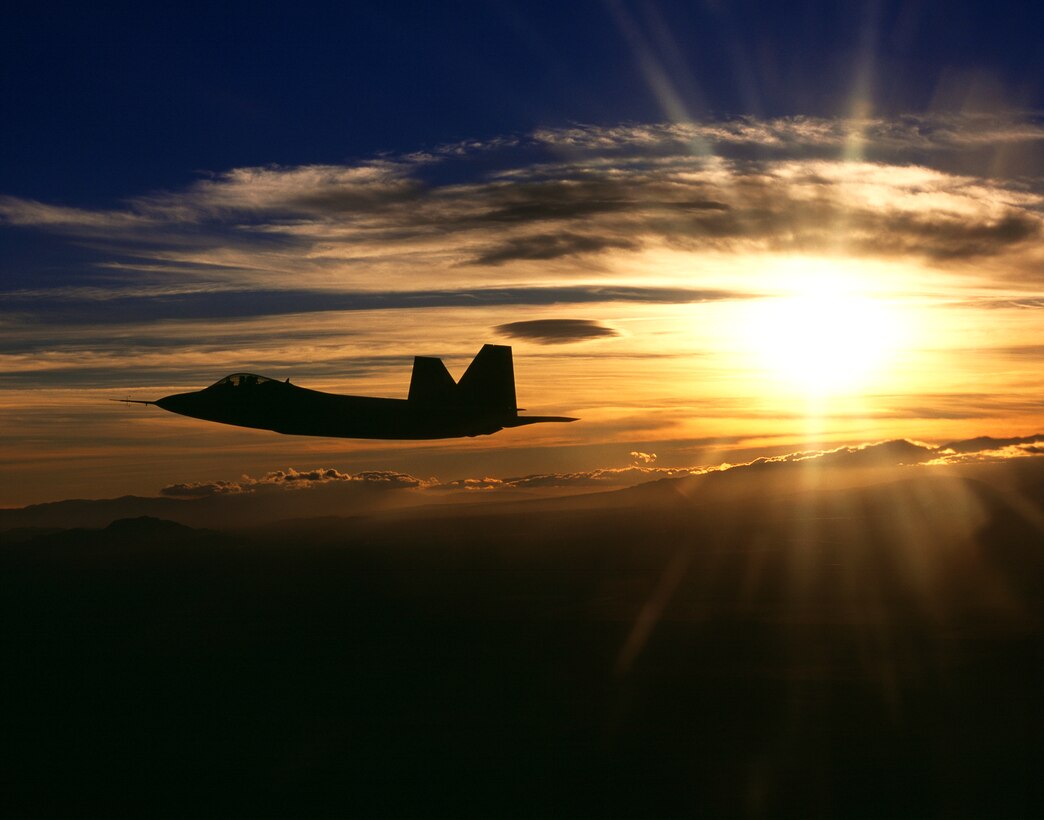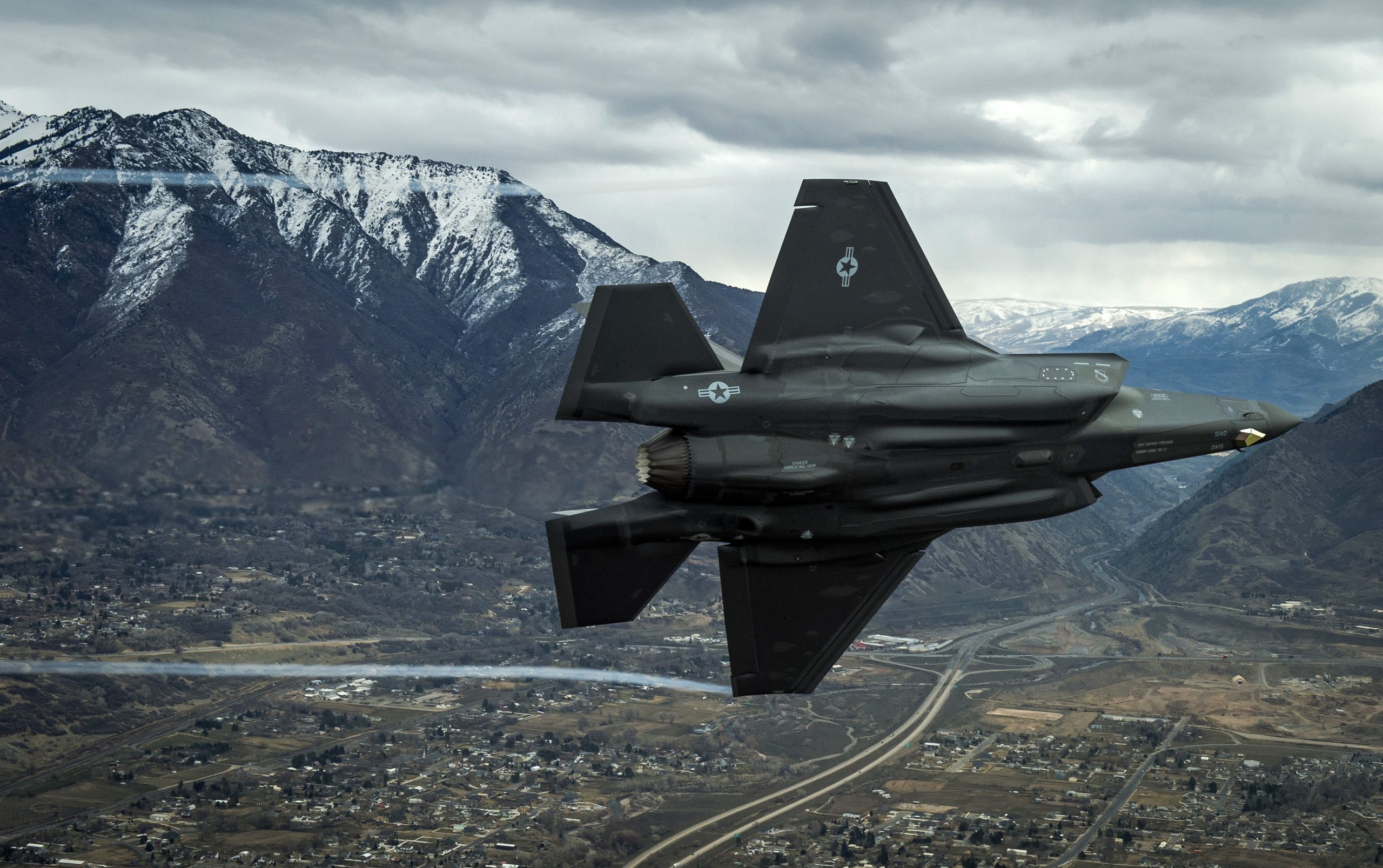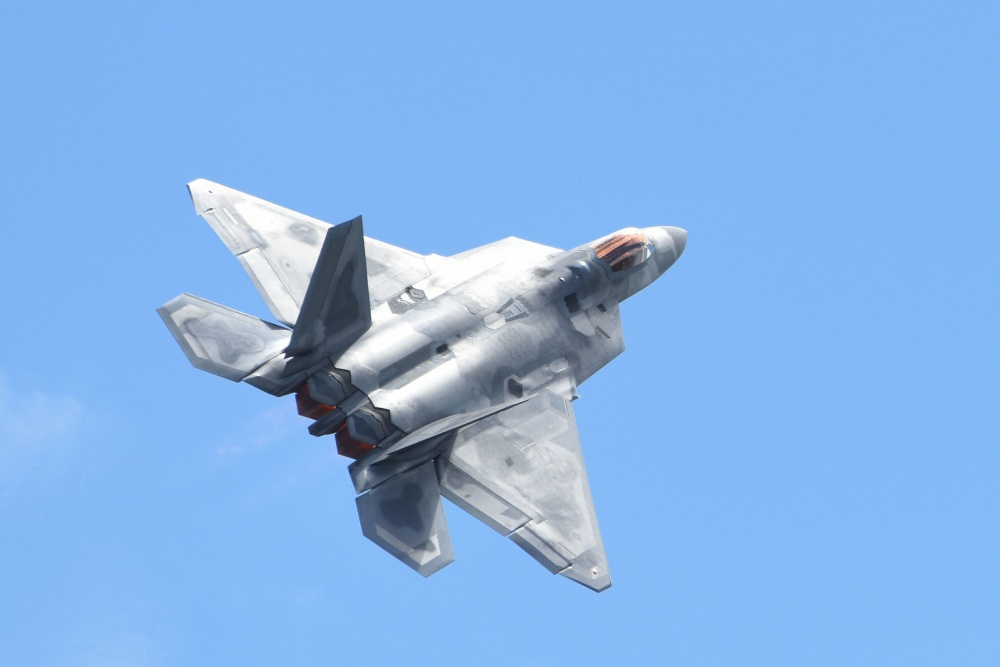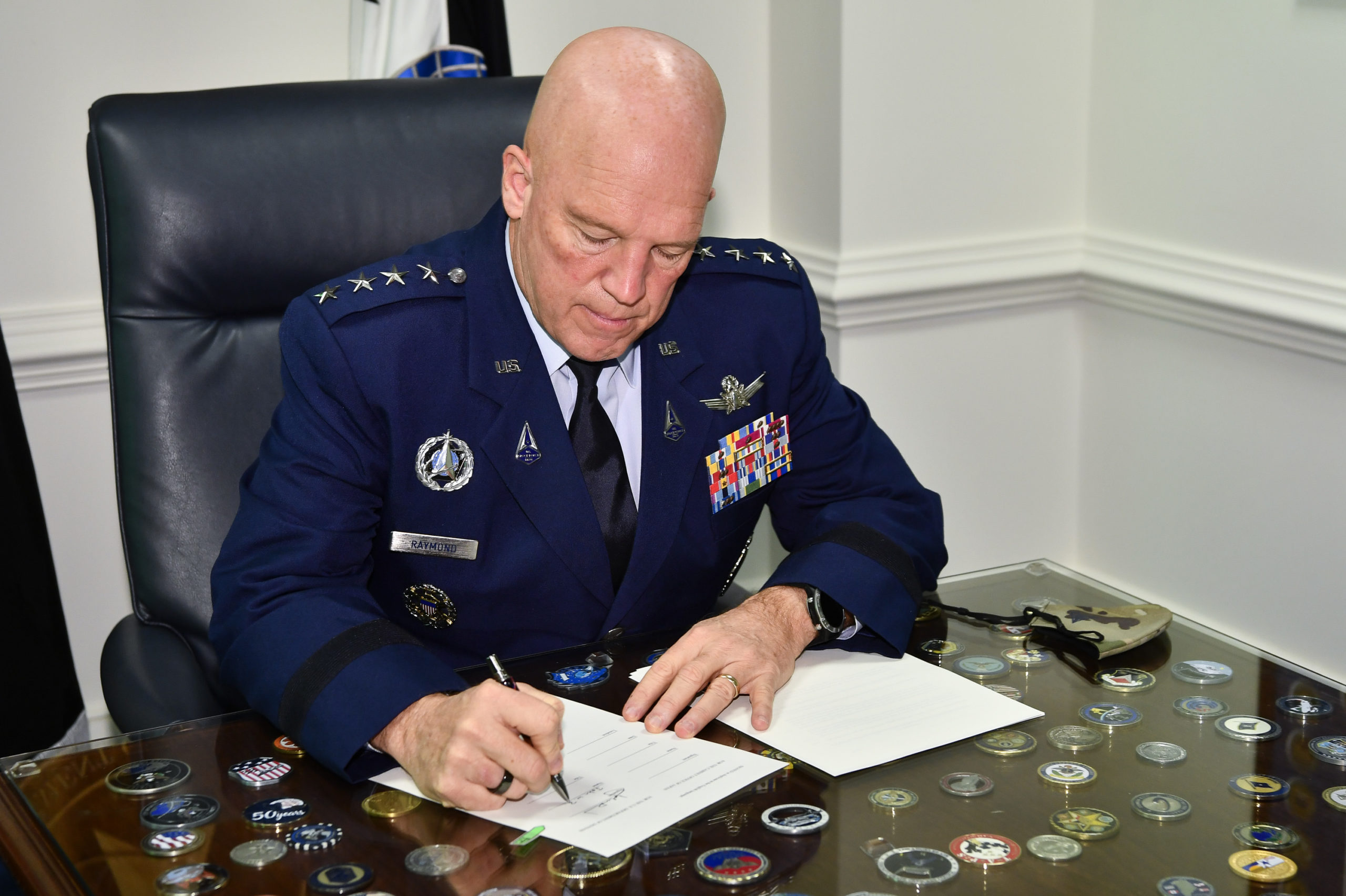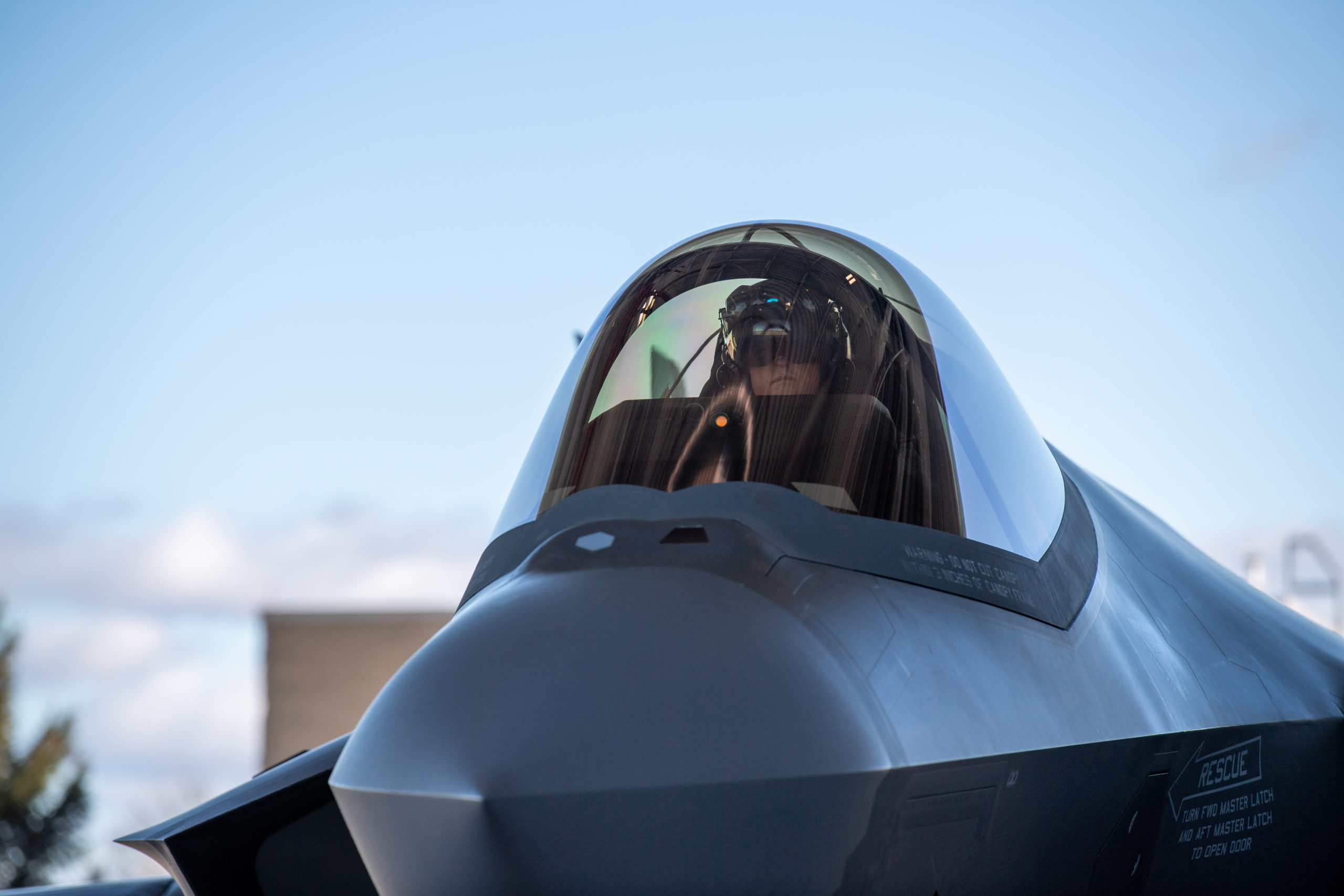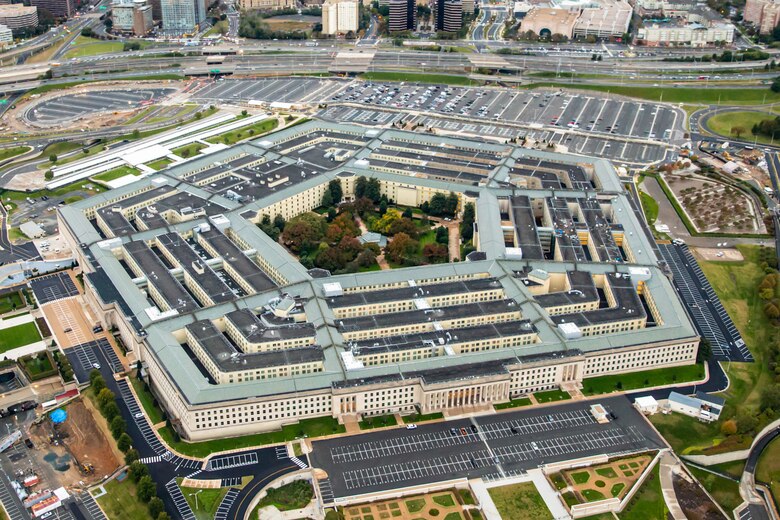The Air Force is preparing to unveil a new 30-year fighter force design that includes at least two all-new fighters, a much greater use of autonomous and unmanned aircraft, a new way of providing close air support, and a narrowing timeline for retiring aircraft such as the A-10, F-16, and F-22, said Lt. Gen. Clinton S. Hinote, deputy chief of staff for strategy, integration, and requirements.
Hinote said the F-22 will begin to phase out in about 2030—the exact timeline will be situation-dependent—and the Next-Generation Air Dominance fighter will be needed soon to defeat a Chinese stealth aircraft and missile threat that is “closer than we think.”
In a May 13 interview with the editors of Air Force Magazine, Hinote said Chief of Staff Gen. Charles Q. Brown Jr.’s revelation that the USAF is planning to reduce its fighter fleet from seven types to “four plus one” is the kickoff of a “transparency” campaign to explain choices to be unveiled in the fiscal 2022 budget submission.
Brown said the future fighter fleet will include the F-35, F-15EX, late-model F-16s, and the Next Generation Air Dominance, or NGAD family of systems; the “plus one” being the A-10. Brown did not mention the F-22, and “this was something you all rightly picked up on very quickly,” Hinote said.
The Air Force plans a “transition” from the F-22 to the NGAD, and “we felt like, now is a good time for us to be able to talk about how we’re going to bridge” between the two systems.
While the F-22 is a good airframe—it has been updated and will continue to receive upgrades, “mostly sensors,” Hinote said—the Air Force is anticipating “the sunset of the F-22 … in about the 2030-ish timeframe.” That won’t be the full retirement of the type, but the beginning of its phase-out, he said. By then the F-22 will be 25 years old and the Air Force should be deep into a new cycle of fielding NGAD and its successors on what could be as rapid as a five-year cycle.
“Our Chief of Staff Gen. Brown has it exactly right: We must ‘accelerate change or lose,’” said AFA President retired Lt. Gen. Bruce “Orville” Wright. “If he says it’s time to start thinking about retiring the F-22, then he understands something about what’s coming with NGAD. The Air Force has led the way in developing and fielding the most advanced technologies on the planet and integrating them into complex weapons systems. They’ve done that from the F-117 a generation ago to the B-21 today. We have to respect Gen. Brown’s confidence and that proven capability to deliver.”
The F-22 fleet is small and suffers from vanishing-vendor problems, senior USAF officers have said recently. A recent high-level USAF planning document said the F-22 won’t be competitive two decades from now. Hinote said the F-22 “has its limitations and we can’t modernize our way out of the [air superiority] problem with just using an updated F-22.”
However, the Air Force will not allow any gap in its ability to achieve air superiority, he insisted.
“We believe … we have a good story,” he said, which is that the F-22 will be kept “viable as a bridge to get to the new capability. This is not an area of the Air Force where we feel we can take a lot of risk.” Though he thinks some mission areas might tolerate gaps or risks—he didn’t name them—air superiority “is not one of them.”
One of the reasons senior leadership is talking about the F-22 and NGAD is because the budget request to be presented in the coming weeks will show a “large … commitment” to the NGAD, Hinote said.
The service expects to have “a tight transition plan” between the F-22 and NGAD, he added. Until NGAD is available, “We feel like a good use of our resources is to keep the F-22 viable as we are developing this sea change in the way we field capability.”
Depending on the threat and hedging against problems in NGAD, the USAF may consider a service-life extension program for the F-22, but Hinote said that seems unlikely because the NGAD is making swift progress.
“I was surprised at how well it’s doing,” he said. He has escorted a number of members of Congress to see the jet—which former USAF acquisition chief Will Roper revealed last September has already flown—and they have come away “at a minimum, fairly impressed,” Hinote assessed. Members of the Office of the Secretary of Defense have similarly visited the program, and “seeing is believing,” he added.
“We still have to make it real, and there’s a lot to do in the program, but when you see what is going on, and you hear it from the Airmen who are flying it, you get a chance to really understand … where we’re going.” He said he wished he could “brag on” the contractors who have brought the program so far, so quickly, but much of the project remains classified.
The NGAD timetable will be “event driven,” but Hinote doubts it will be 10 years before it is in operational service. The “long pole in the tent” right now is integrating “the most important things onto that platform with a government reference architecture.”
He also noted that NGAD is a family of systems and will be “optionally manned,” meaning several versions of the jet may be built and employed with or without crews.
When the budget comes out, “it may not look like a 100 percent” replacement of F-22s with NGADs because “you’re talking about a set of capabilities, … some of that may be unmanned [or] optionally manned. So it’s not one-for-one.”
Broadly, he expects the Air Force to embrace autonomous aircraft as force multipliers. “We’re really working hard at identifying the true value propositions” in missions where unmanned systems may be used, he reported. He noted the Skyborg autonomous aircraft test earlier this month, which did not require the use of a runway for launch or recovery—something that could be a game-changer as the Air Force seeks to complicate the targeting problem for adversaries.
The NGAD concept calls for rapid turnover in technology, such that when one is about to be deployed, the next version will already be in design, if not development. Hinote suggested that the second NGAD type is already in design, then said, “I can’t confirm or deny that one.” But the Air Force is embracing the concept because it will allow “the great companies of our industrial base to re-enter the competition at the design phase, as opposed to crowding them out in the sustainability phase” as a consequence of what has recently been coined “vendor lock.”
It hasn’t been decided what the optimum cycle of NGAD platform turnover should be, but the hardware and software will be in a perennial spiral, Hinote said.
“As you’re allowing that program to mature, through a spiral series, you’re designing the next platform” with new software and sensor technology, he said. As these are integrated into the existing version, “you jump over that one” to the next one. “It could be every five years,” he said. “It could be every eight years.”
The A-10, which also is expected to fly until the 2030s, will be superseded by a “new way” and “new concepts” of delivering close air support, Hinote said.
“We’re not looking at building another non-survivable close air support aircraft like it,” he explained. “The lines on the battlefield are not necessarily where you’re going to be. In fact, it’s probably going to look much more distributed … [that’s why you’re seeing the] long-range fires discussion … play out in the press and in the Pentagon.” This is a “big, big deal,” he said. Close air support will “feel much different.” The new aircraft will be used “typically” in the counterterrorism environment, Hinote said, and the new concept is “pretty compelling.” He didn’t give details, but said that when the new capability becomes available “it’ll be pretty evident that we need to just go ahead and divest the A-10 and move to the new” construct.
As for the F-16, Hinote confirmed what Brown has suggested, that it will likely be a “clean sheet design” created in much the same way as the NGAD, using digital methods. The role envisaged for the new airplane will be homeland defense and missions “that don’t necessarily require a high level of survivability.” For example, it may not need to have “radar stealth.”
However, this is not a pressing decision, as “our F-16 ‘new’ blocks are actually still in decent shape; we can upgrade them and keep them viable for some time.” When it comes time to “sunset” the F-16, “a clean sheet design using digital tools is the way to go,” Hinote said.
Fielding the NGAD is urgent, Hinote added. While he would not say when the threat will overmatch USAF’s current capabilities, “the time is absolutely coming where the combination of something like a [Chinese] J-20 with an advanced … missile is a threat to air superiority for the United States. … It’s something we’ve got to address.”
